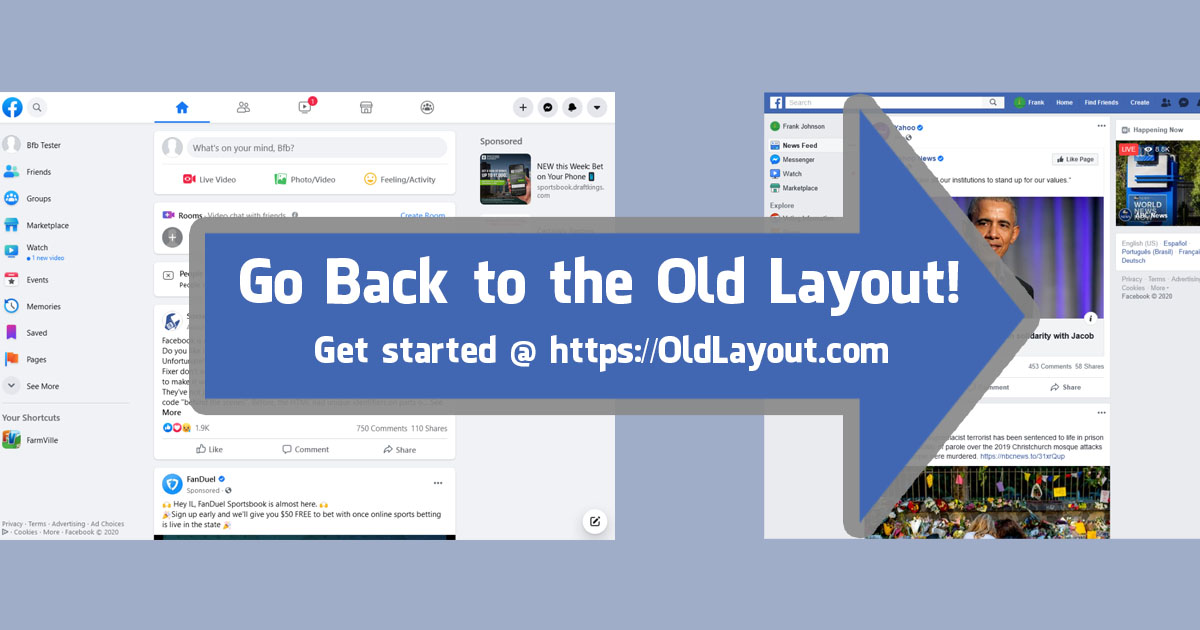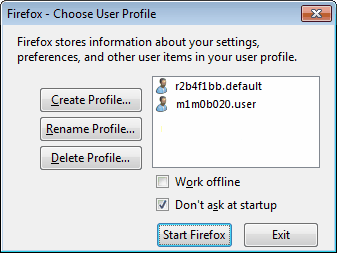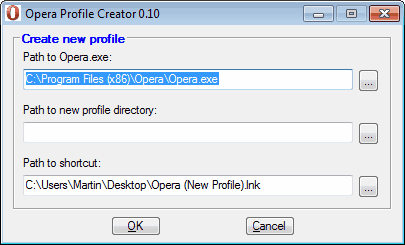
- #OPERA PROFILE CREATOR INSTALL#
- #OPERA PROFILE CREATOR SKIN#
> Advanced > Tabs > Additional tab options.
Clear any entries in Settings > Preferences. > General > Startup > Start without open tabs. To ensure only private tabs are used throughout the duration of the browsing session: To open a private tab from the command-line use: This is similar to the -incognito option in Chrome/ Chromium and Private Browsing in Firefox. When you close a private tab, the following data related to the tab is deleted: To browse without leaving obvious traces of the Web sites you visit, you can use a private tab. A known issue that causes this problem is the helvetica pfb postscript fonts. Note: If no text except numbers is showing on some of the webpages that might be a problem with the fonts. Re-install the ttf-ms-fonts AUR package, if desired. Restore bookmarks and desired filter files from ~/.opera.bak to ~/.opera except for the operaprefs.ini file. Run an instance of Opera and verify that your font manager settings have been applied. Move the existing profile folder: mv -i ~/.opera ~/.opera.bak. Un-install the ttf-ms-fonts AUR package. To force existing installations of Opera to use the options set by your system: If the ttf-ms-fonts AUR package has been installed before running Opera for the first time, Opera will use those fonts by default, regardless of what is specified by local GTK options, GNOME or KDE font management. Appropriate buttons can be found by activating the "Main" toolbar or by dragging and dropping the buttons anywhere desired, found in Menu > Appearance > Buttons > Browser.įonts can be configured under Settings > Preferences. Opera has native support for tab cascading and tiling mode. The title bar can be hidden by right-clicking on the tab bar, then unchecking "Show Border". #OPERA PROFILE CREATOR SKIN#
GTK A nice GTK skin that uses the Tango icon theme can be found here.

#OPERA PROFILE CREATOR INSTALL#
KDE To make Opera use KDE icons, you can install a theme such as this one. Qt To make the menus look integrated with Qt, install your preferred Qt theme and apply it by using qtconfig.
using the -pd command-line flag to tell Opera where to store its profile data:Īlthough Opera is cross-platform, it can be made to integrate very well into various Linux desktop environments. using Profile-sync-daemon, that automatically detects and relocates the Opera profile to tmpfs. There are currently two ways of doing this: Another benefit is a reduction in disk read and write operations, of which SSDs benefit the most. Relocate the browser profile to a tmpfs filesystem, including /tmp for improvements in application response as the entire profile is now stored in RAM. To more easily find these options just write the respective path (without spaces) in the address bar, for example opera:config#UserPrefs|ShowTrayIcon or use the built-in search. Web Server: uncheck Enable under opera:config#Web Server. Multimedia: unckeck desired options under opera:config#Multimedia. Geolocation: uncheck Enable geolocation under opera:config#Geolocation. BitTorrent: uncheck Enable under opera:config#BitTorrent. 
Systray Icon: uncheck Show Tray Icon under opera:config#UserPrefs.One of the keys to maximizing application performance is to disable undesired features and services through the native opera:config Preferences Editor. Install Adblock support using the opera-adblock-complete AUR package.Īlthough Opera is fast on modern hardware, it can be made even faster. Tip: Opera also has a built-in ad blocker which can be enabled in Settings. Note that Opera no longer supports the Netscape plugin API (NPAPI), but only the newer Pepper plugin API (PPAPI). Instead you can try Vivaldi by former Opera team members or Otter Browser with really similar UI.įor details about different plugins and installation instructions see Browser plugins. Using Presto-based Opera is not recommended because of security and compliance with modern web standards.

You can still use the old proprietary Presto layout engine by installing Opera 12.16 with the opera-legacy AUR package. The current Opera uses the modern and open-source Blink engine.
8.5 Unreadable input fields and address bar with dark GTK themes. 
8.4 Opera crashes when starting or closing with GTK 2.24.7+. 6.4 Virtual On-Screen keyboard (extension). 6.3 Long pressing a link opens it in a background tab (extension).








 0 kommentar(er)
0 kommentar(er)
